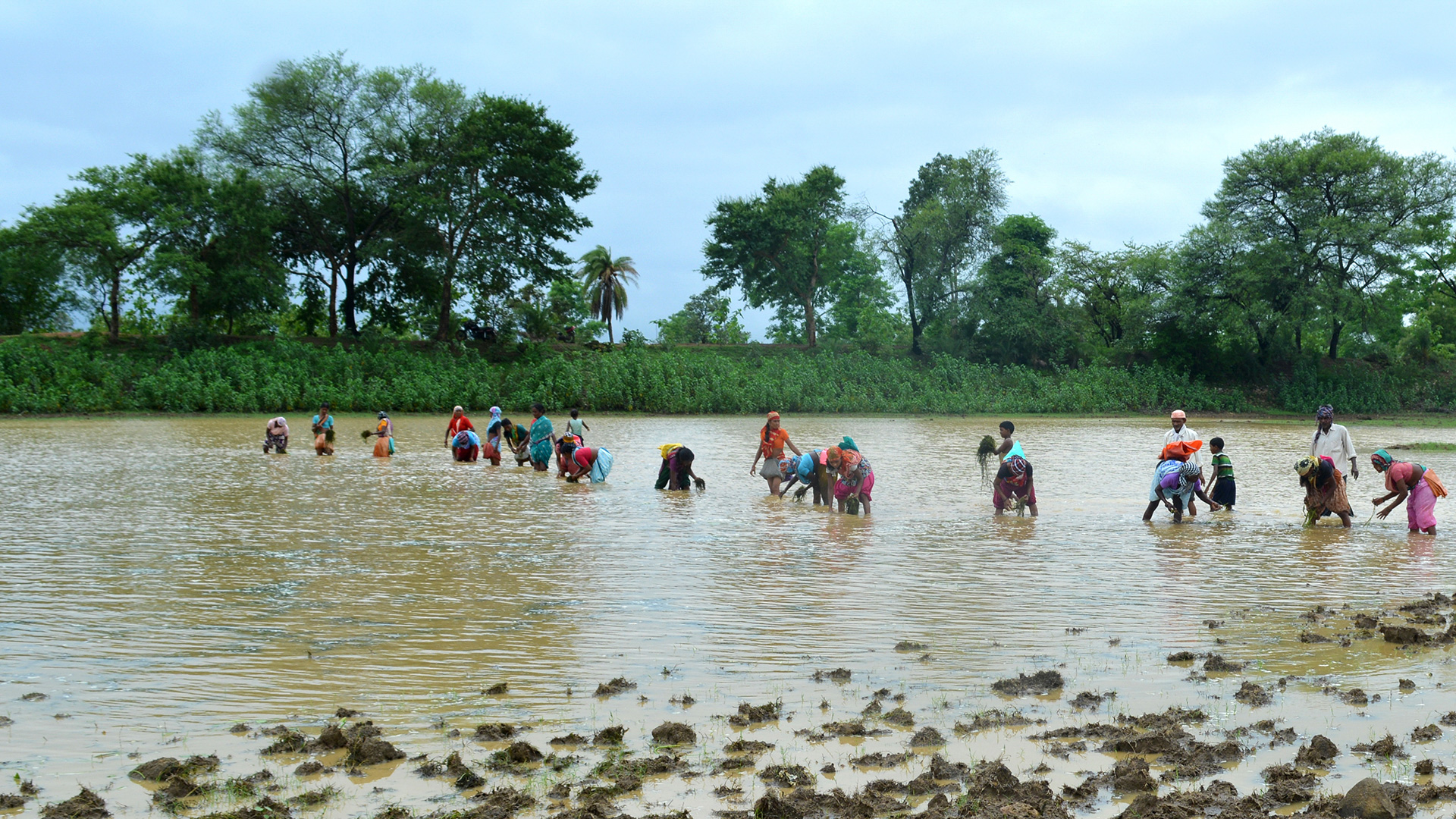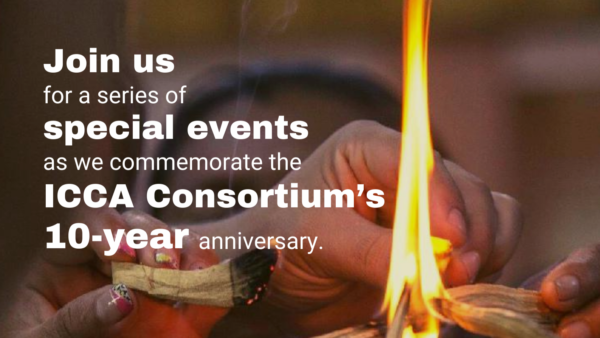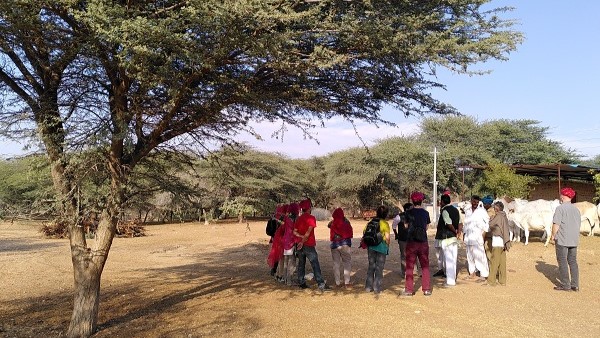The Consortium as a collective and its members in their capacities have been among the critical actors in facilitating the changed understanding: support and recognition to the Indigenous Peoples and local communities, their worldviews, bio-cultural governance, and knowledge systems can help us arrive at transformative pathways to address the deepening global ecological and climate crises
First published on 02/15/2024
By Neema Pathak Broome
Coordinator, Conservation and Livelihoods program, Kalpavriksh (ICCA Consortium Member) and Regional Coordinator for South Asia, ICCA Consortium
Note: The Great Transition Initiative first published this article in November 2023. The article has been partially edited for republication on the ICCA Consortium website.
Indigenous Peoples and local communities across the globe have faced colonization and extractive exploitation of their lands, waters, and territories to feed the imperial and capitalist powers.
In most countries of Asia, Africa, and South America, the postcolonial national governments have continued the colonial practices of land and resource appropriation, for commercial exploitation on the one hand and fortress conservation on the other, by dispossession and non-recognition of the rights of Indigenous Peoples and local communities, their ways of being, and worldviews.
However, any territories, lands, and waters that remain occupied or used by Indigenous Peoples continue to encompass significant biodiversity and wildlife and are known to protect 80% of global biodiversity.
Their contribution to biodiversity conservation and climate action remains ignored, and they face more significant than ever threats from national policies and practices of biodiversity conservation and prevalent practice of corporate-controlled growth, development, and modernization. This is the backdrop of the emergence and mission of the ICCA Consortium.
The emergence of a global movement
Conventional conservation practices and policies with colonial roots remain heavily influenced by large international conservation organizations and conventions. In 1994, one of the co-founders of the Consortium, after becoming the head of the IUCN Social Policy Programme, formed the Collaborative Management Working Group as a step towards the inclusion of Indigenous Peoples and local communities.
The Working Group pushed for developing and adopting the IUCN programmatic recommendation on Collaborative Management for Conservation, along with some recommendations on Indigenous Peoples’ rights and the need to defend Indigenous Peoples from industrial and mining developments. This seemingly small opening was a big breakthrough within conventional conservation organizations, with many governments and conservative conservation organizations as its members.
However, those pushing for these approaches had to pay a price for being “too socially minded and radical,” and many were pushed out of their institutions. These key actors came together to form a loose network and began to connect with others in different parts of the world.
Because of their network-building and outreach, the conservation narratives gradually shifted from exclusively state-led fortress conservation to collaborative and shared systems of conservation and eventually to the conservation systems of Indigenous Peoples and local communities, including through self-rule and self-determination. The term Community Conserved Areas (CCAs) began to gain recognition and visibility in the global conservation discourses.
Over time, the narrative embraced the ICCAs—Indigenous and Community Conserved Areas—areas and territories conserved by Indigenous Peoples and local communities, and current ICCAs–territories of life.
ICCA Consortium
In 2010, after much internal reflection and discussion, it became evident that sustaining this momentum and providing meaningful support to the struggles of ICCAs would require some level of formalization and institutional and financial support. Thus, the ICCA Consortium was thus created.
By the end of 2022, the ICCA Consortium had 217 members and 474 honorary members spread across 86 countries.
Among the most significant challenges for an association like the ICCA Consortium is to strike the right balance to achieve some form of formal institutionalization yet retain the characteristics of a movement. While the former is essential to ensure structured, better coordinated, financially strengthened, and sustained support to members, the latter is essential for decentralized decision-making and functioning with flexibility, adaptability, informality, consensus building, transparency, inclusivity, and mutual sharing of responsibility and accountability at all levels and spheres.
The Consortium is currently strengthening its regionalization processes. Members and honorary members in the six identified regions are self-organizing, and some hold regional/national assemblies.
Regionalization processes vary from region to region, ranging from well-structured and formal to informal collaborations. However, all regions have regional/national strategies, agendas, procedures, and modalities.
As with the Consortium’s global General Assembly, regional assemblies make decisions by consensus through regular open and inclusive discussions largely online and sometimes in person. Such assemblies allow members and honorary members to discuss and share current work and challenges and to co-design and identify priorities and plans for the region. Regional assemblies have been crucial for enhancing mutual learning exchanges on various issues, extending mutual support and solidarity, collectively strategizing, fundraising, and resource-sharing.
Achievements
As the global ecological and climate crisis deepens, there has also been an increasing realization that supporting and recognizing Indigenous Peoples and local communities, their worldviews, bio-cultural governance, and knowledge systems can help us arrive at transformative pathways to address global crises.
The Consortium as a collective and its members in their capacities have been among the critical actors in facilitating this changed understanding. The Consortium has emerged as an essential actor in global and regional discourses, agreements, conventions, and processes related to conservation, continuing to play a critical role in shifting conventional conservation policies and practices towards more significant equity, justice, and inclusivity.
Simultaneously, the goal has also been to bring more significant support and visibility to conservation and climate contributions of the Indigenous Peoples and local communities, their self-determination and self-strengthening processes, and struggles to defend their territories against extractivism.
This goal has been achieved through regular publications and policy briefs; supporting local, national, and regional documentation processes; facilitating regular interactions among the members on global policy discourses and finance mechanisms; facilitating direct participation of the Indigenous Peoples and local communities from ICCAs in various global and regional negotiations and dialogues; peer learning exchanges; support for self-strengthening and self-sustaining processes to overcome internal challenges; among others.
Consortium members and secretariats at national, regional, and global levels also work on building deeper collaborative partnerships with bilateral and multilateral organizations, such as the UNDP Small Grants Programme, towards greater support to ICCAs and dialogues with large conservation organizations, such as the World Wildlife Fund, whose policies directly or indirectly impact the ICCAs.
Challenges
As is expected, an association like the Consortium would constantly face internal and external challenges. The internal challenges relate to maintaining internal equity, accountability, transparency, and power balances. The Consortium has grown multiple times in its financial outlay and secretariat strength over the one decade of its formal existence.
Achieving a particular scale of operation, efficacy, and support while avoiding concentration of power requires constant vigilance, reflection, and action at all levels. Most decision-making functions within the Consortium rely heavily on the voluntary contribution of time and effort from those who are often also engaged in deep grassroots action. It can be challenging to seek accountability for voluntary commitments, particularly when actors are already over-committed.
While the Consortium has contributed towards significant gains at the international policy level, translating these policies at the national level has been an enormous challenge.
Nationally, ICCAs in many regions are facing pushback from the state agencies, as large conservation organizations and state wildlife departments continue to push for fortress conservation, leading to large-scale human rights violations and internal displacement. Provisions of Free, Prior, and Informed Consent are largely violated. The trend to co-opt the language of inclusion, equity, and justice in policy statements, while actual implementation regresses on these values in the worst case or maintains business as usual in the best, is increasing.
Finally, the enormity of what Indigenous Peoples and local communities are up against cannot be over-emphasized: deeply entrenched structural power imbalances and injustices, an ever-increasing growth-based extractive model, and rapid internal socio-cultural changes; centralized powers in the hands of authoritarian and corporate-led or controlled governments, gagging media, criminalizing dissent, and squeezing spaces for resistance and financial support; geopolitical conflicts and wars between nation-states.
In conclusion, the Consortium has internal reflections and discussions on how to extend support to IPs and LCs in these situations and precipitate the larger global transformative change. In 2023, the Consortium finalized and adopted a manifesto as a working document to keep learning, reflecting, and acting toward a constantly evolving response to the global crisis.



